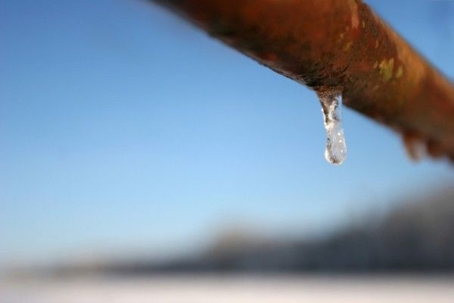Winters in the Northeast are fickle; one day it’s 50 degrees and the next it’s in the single digits. When the temperatures do creep below 32 degrees Fahrenheit (the freezing point), the risk of having your plumbing pipes freeze is very real. To prevent having a pipe freeze and burst (which can cost you thousands in repairs), follow this easy guide:
Winterizing Exterior Faucets
Were you a good homeowner this fall by winterizing your outdoor faucets? Well if not (shame on you), make sure you do this right now! Water inside of your outside faucets and garden hose will expand upon freezing, which can build up pressure throughout your home’s entire plumbing system. Remove all hoses and faucet extensions, turn off the water supply to the outside faucets, drain them until they drip dry, and install insulated covers.
Unheated Plumbing
Sometimes plumbing pipes can run through unheated portions of the house like the attic, crawl space, garage, and unfinished basements. Since not many people are going to spend the money to insulate an entire area of the house, opt for foam insulation. Simply measure and cut this inexpensive insulation and tape it in place for a secure fit.
Piping in Walls
Just because your plumbing runs through the walls doesn’t mean it’s protected against the outside freezing temperatures. Walls that aren’t properly insulated put your home at risk for severe water damage if a pipe happens to burst. Adding extra insulation to your home’s walls could cost a few hundred dollars, but it pales in comparison to the money you’ll spend on water damage removal, remodeling, and plumbing repairs.
If you didn’t take care of it this past fall, preventing frozen pipes in your home should be at the top of your winter to-do list. If your pipes do burst or you need a plumbing repair, contact Tri-City Heating and Cooling. To learn more, or to schedule an appointment, give us a call at ((203) 303-5700.

